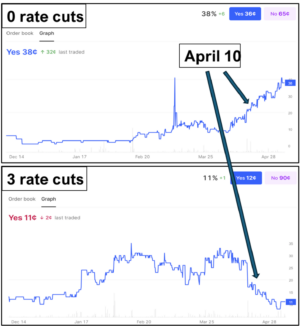In yesterday’s piece, we raised this important point:
“Parabolic uptrends imply that some group is desperate for the commodity or security in question.”
The moves that we have been seeing in oil, grains and metal had to be taking a toll on someone. Let me be perfectly clear – I don’t wish any ill upon a non-aggressor. But I found it inconceivable that we hadn’t heard of an organization’s leveraged losses until this morning, when it was reported that Chinese nickel producer Tsingshan Holding Group was potentially facing billions in margin calls. Commodities don’t double in price in two days without some sort of trouble spurring the move.
Last Monday we warned about the likelihood of trouble for someone, not knowing whom, but on the basis that global crises often have unanticipated consequences:
“Major dislocations mean that someone is likely to have the wrong positions. Worse, if they are held in a leveraged account, a move of sufficient magnitude is likely to require margin calls and/or forced closeouts. If those forced closeouts are of sufficient size, they have a nasty way of metastasizing in unexpected ways.”
Even though we haven’t heard of widespread difficulties among oil or grain traders, those effects are certainly metastasizing throughout the economy. A parabolic move in nickel has little immediate impact outside the relatively small world of producers and consumers of that commodity (aka “commercials” in futures lingo). Even a sharp move higher in wheat, which impacts pretty much anyone who eats, isn’t necessarily obvious immediately to the end consumers of bread, pasta, etc. Oil prices, though, are a special case. Rising oil prices are passed along almost instantaneously. Gas (petrol) prices are displayed in large neon numerals everywhere, they change frequently, and drivers need to fill up regularly. U.S. consumers, who generally pay far less than their counterparts throughout the developed world, are currently seeing the highest average pump prices ever.
Rising fuel prices are contributing mightily to investor fears of stagflation. We would normally get some clarity about the path of inflation when US CPI is reported on Thursday, but those statistics are for February. Expectations are for a 0.8% monthly increase in headline CPU to a 7.8% annual rate, and a rise of 0.5% in monthly CPI ex-food and energy for an annual rate of 6.4%, but those numbers might be considered obsolete at the second they arrive. So far in March wheat futures are up about 60% and oil futures are up about 30%. It will be easy to dismiss the February numbers as being behind the curve, even without the lag between rising commodity prices and their appearance in finished goods.
Yesterday’s reference to parabolic moves was in reference to whether traders should be considering them with a contrary viewpoint. We noted:
“Parabolic uptrends are almost always unsustainable for long periods of time and tend to reverse abruptly and sharply. The question is when.”
Anyone viewing one of these parabolic charts could hardly be blamed for being tempted to look for short sale opportunities. It is a reasonable temptation, because the potential for a significant downdraft is always present. But remember that markets can remain irrational longer than you can remain solvent. Also bear in mind that seeming irrationality can often reflect someone else’s unfortunately rational response to acute pain. Hence the appearance of the parabolic move in the first place.
Disclosure: Interactive Brokers
The analysis in this material is provided for information only and is not and should not be construed as an offer to sell or the solicitation of an offer to buy any security. To the extent that this material discusses general market activity, industry or sector trends or other broad-based economic or political conditions, it should not be construed as research or investment advice. To the extent that it includes references to specific securities, commodities, currencies, or other instruments, those references do not constitute a recommendation by IBKR to buy, sell or hold such investments. This material does not and is not intended to take into account the particular financial conditions, investment objectives or requirements of individual customers. Before acting on this material, you should consider whether it is suitable for your particular circumstances and, as necessary, seek professional advice.
The views and opinions expressed herein are those of the author and do not necessarily reflect the views of Interactive Brokers, its affiliates, or its employees.
Disclosure: Margin Trading
Trading on margin is only for sophisticated investors with high risk tolerance. You may lose more than your initial investment. For additional information regarding margin loan rates, see ibkr.com/interest
Disclosure: Futures Trading
Futures are not suitable for all investors. The amount you may lose may be greater than your initial investment. Before trading futures, please read the CFTC Risk Disclosure. A copy and additional information are available at ibkr.com.



























